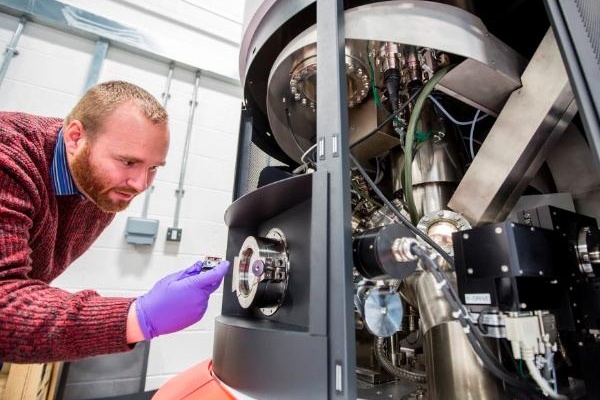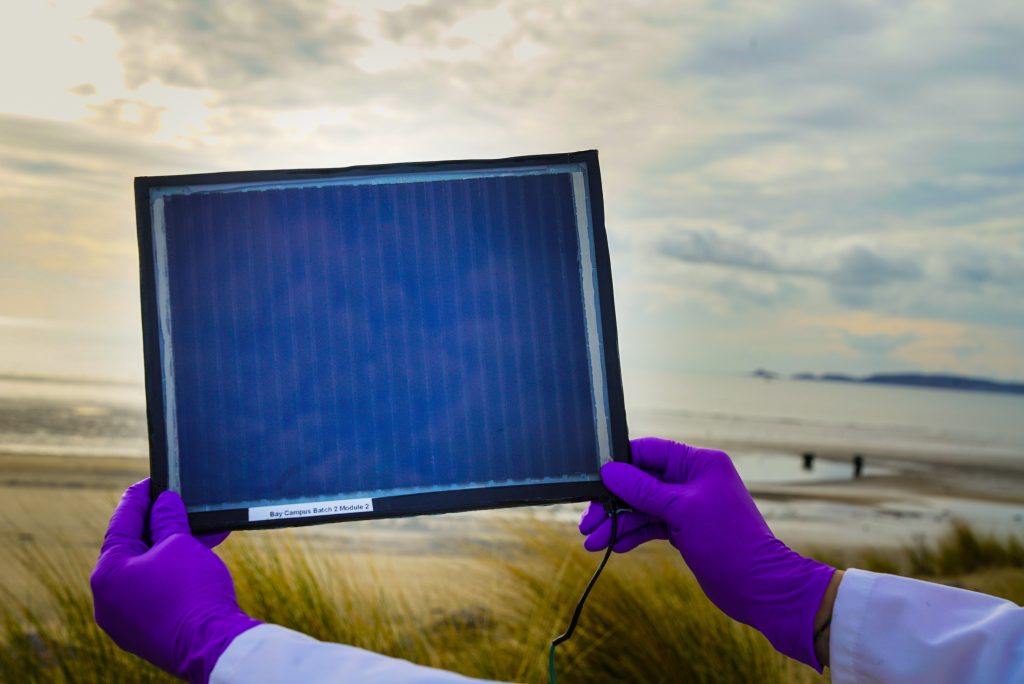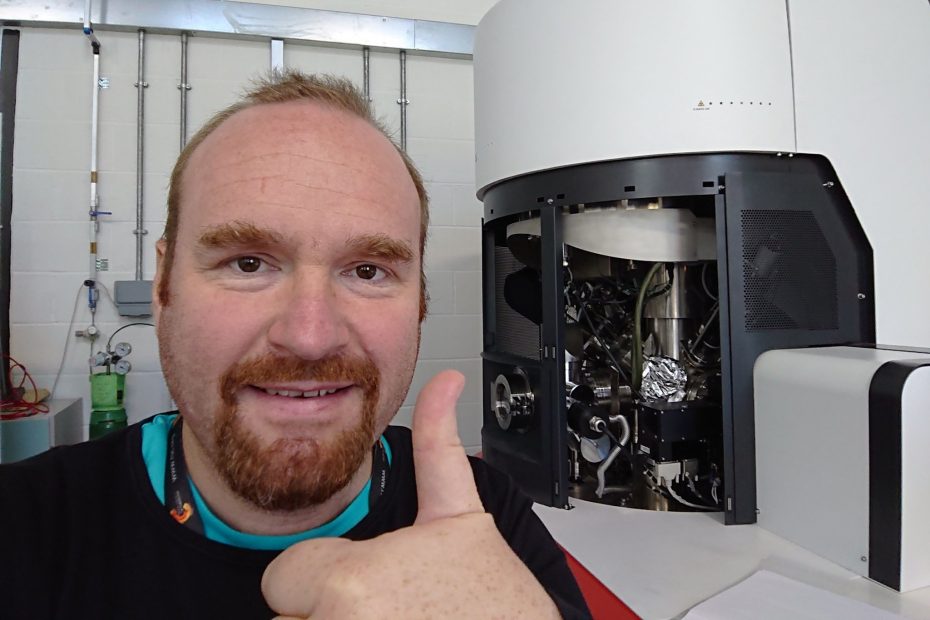Here at SPECIFIC, our PV team are looking at scaling up perovskite solar cells (PSCs). A recent paper published by the team notes that use of XPS in perovskite can provide variable data and advises caution when analysing Pb(0) in perovskite systems. Having recently won an HOPV20 ePoster competition, our Research Officer Dr James McGettrick has written about his work that inspired the poster…
The name “Perovskite” may sound kooky, but it’s a big group of materials – many of which have potential electronic uses – named after a Russian Minister of Internal Affairs and geologist. Our research at SPECIFIC looks at printing perovskites to manufacture solar cells – you can see more in my colleague Rahul’s recent blog.
When printing here at SPECIFIC, we look at things that change the surfaces and interfaces of solar cells. Wetting is an important factor, and we analyse simple ways of tweaking this. I study a lot of materials with X-ray using my beloved XPS (X-ray Photoelectron Spectrometer – Einstein won his Nobel prize in physics for explaining photoelectrons and this was a crucial proof of quantum theory). We’ve been studying lots of materials for PSCs, and before lockdown hit, we also had some really interesting analyses of organic photovoltaics, thermoelectrics and steel to study.
PSCs are the known as ‘the next big thing’ in solar energy, and commercialisation is fast approaching, but as perovskite is a new material, there’s still a lot to understand about why it’s so effective in solar cells. Perovskites are exciting because they’re relatively easy to make in the lab and they’re very efficient, but researchers need to do the ground work to understand them properly. The engineering behind making 1 x 1 cm2 lab solar cell into something that you can put on a roof is massive. Engineers need good data to make sure they’re making the most efficient cells and correct the problems that arise when scaling up the work.


My own work uses X-rays to look at PSCs, and I have recently been looking into why the lead sometimes has two different forms – when it should only have one. One of the forms of lead sometimes seen – that we call Pb(0) – is hard to explain and likely mostly there due to a common chemical (PbI2) used to make the solar cells. PbI2 is also a common chemical that we see if the cells are failing with old age. It is important to be careful to make sure which is occurring: Imagine going to the dentist for a tooth ache and being told you have a broken arm. This is the same problem. We’ve got to be 100% sure about this Pb(0) or else we risk confusing engineers and prescribing the wrong fix. If all of the world’s researchers are analysing PSCs in the same way, we can also compare our results more easily and focus on the important challenges for making this material into commercial solar cells.
I have a background in industry, so I get very excited by consistent, reproducible data, and unexplained variation can be frustrating. I was getting increasingly concerned that there were problems in studying perovskites that not all scientists around the world appreciated – particularly the mysterious Pb(0). This paper was published to give our take on the causes and it provides some suggestions for making experiments using perovskites more consistent.
With thanks to the paper’s co-authors:
Dr Katherine Hooper, Dr Adam Pockett, Dr Jonathan Counsell, Dr Jenny Baker, Dr Joel Troughton, Dr Matthew Carnie, Prof Trystan Watson
